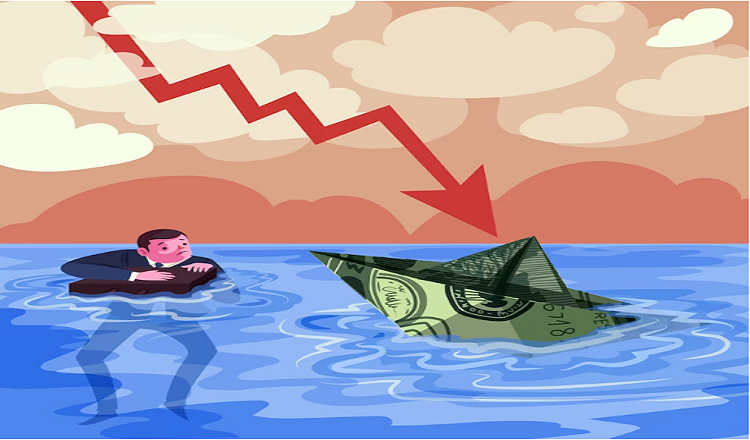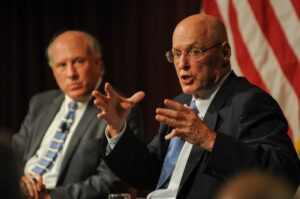Understanding how natural disasters affect financial markets

Natural disasters can happen at any time and can cause a lot of damage to people and their property. Also, they have a big effect on the business, especially on the financial markets. Natural disasters, like hurricanes, earthquakes, floods, and wildfires, can mess up the supply chain, hurt companies, and have long-term effects on the financial markets. Because of this, it’s important to know how these events affect the US financial markets and what businesses and investors can do to lessen their effects.
In this piece, we’ll talk about how natural disasters affect the US financial markets. First, we’ll talk about what natural disasters are and why it’s important to know how they affect financial markets. Next, we’ll talk about the different kinds of natural events that can affect financial markets and how they affect different markets. We will also talk about how natural disasters affect the economy and what companies and people can do to protect themselves. Lastly, we will look at case studies of major natural disasters that had an effect on US financial markets and talk about what we can learn from each event. By the end of this piece, readers will know more about how natural disasters affect financial markets and how to get ready for them and lessen their effects. So, let’s get started!
What kinds of natural events can affect the economy?
There are many different kinds of natural events that can have an effect on the US financial markets. Hurricanes, storms, floods, earthquakes, wildfires, and other severe weather events are some of these. Depending on where, how bad, and how long the event lasts, each type of natural disaster can have a different effect on the financial markets.
Hurricanes and floods, for example, can cause problems with transportation, power, and communication networks, which can slow down production and lower customer demand. Earthquakes can ruin important infrastructure, which can cause problems in the supply chain and in the financial markets. Wildfires can hurt agriculture, cut down on tourists, and cause problems with transportation networks. These things can have long-term effects on financial markets, like making the stock market more volatile, reducing the number of investment chances, and slowing down economic growth.
Hurricane Katrina in 2005, the Japanese earthquake and tsunami in 2011, and Hurricane Sandy in 2012 are all big events that shook up the financial markets in the past. These events hurt the economy by billions of dollars and had long-term effects on the financial markets in the United States.
How different financial markets are affected by natural events
Natural tragedies can have a big effect on many of the USA’s financial markets. Some of these markets are the stock market, the bond market, and the commodity market. Natural disasters can have different effects on each market, based on where they happen, how bad they are, and how long they last.
For instance, natural disasters can interrupt supply chains, which can lead to less output, which can have an effect on commodity markets. They can also make the stock market uncertain and volatile, which makes investors less confident and cuts down on investment chances. On the bond market, natural disasters can lower credit ratings, which makes it more expensive for businesses and governments to borrow money.
In the past, natural disasters have had an effect on financial markets in the United States. For example, the 2011 Japanese earthquake and tsunami caused stock prices to drop around the world and oil prices to go up by a lot. In 2005, Hurricane Katrina caused oil prices to go up, which meant that consumers and companies had to pay more. Hurricane Harvey in 2017 caused big problems in the oil and chemical industries, which messed up the supply chain and slowed down economic growth.
Economic effects of natural disasters
Natural disasters can do a lot of damage to the US economy. They can have an effect on companies, industries, and communities. This can lead to slower economic growth, higher unemployment rates, and fewer chances to invest. Natural disasters can hurt the economy in different ways, based on the type of disaster, where it happens, and how long it lasts.
Infrastructure can be damaged by natural disasters, which can slow down output and mess up the supply chain. They can also cause power outages, problems with communication networks, and less demand from customers, which means less money for companies. Natural disasters can also hurt industries like tourism, farmland, and energy, causing less work to get done and less money to come in.
Natural disasters can cause a lot of damage and loss of life, which are both direct costs. There are also indirect costs, like lost output and slower economic growth, which are indirect costs. In 2020, natural disasters in the US are expected to cost the economy $95 billion. This shows how much of an effect these events have on the economy.
Strategies to lessen the effects of natural disasters
To get ready for natural disasters in the USA, companies and people can use a number of mitigation strategies. Some of these tactics are making emergency plans, making sure property is safe, and buying backup power and communication systems. Insurance can also help make the effects of natural disasters less severe by protecting against damage to property and loss of income.
Natural disasters can also hurt the financial markets, but government policies can help lessen the damage by giving money for crisis response and recovery. They can also set rules and laws to make sure that important infrastructure is built to withstand natural disasters. Also, government policies can help businesses and people get ready for natural disasters by giving them tax breaks or other forms of financial support.
Case studies of environmental disasters in the US and how they affect the financial markets
When you look at how natural disasters have affected US financial markets in the past, you can learn a lot about how the markets might respond in the future. Hurricane Katrina in 2005, the earthquake and tsunami in Japan in 2011, and Hurricane Harvey in 2017 are all examples of important case studies.
Each of these events had a big effect on the financial markets, including shaking up the energy and commodity markets, making investors less confident, and making global markets more volatile. But each event also taught companies, investors, and people who make laws important lessons. For example, Hurricane Katrina showed how we need to be better prepared for and respond to disasters. The Japanese earthquake and tsunami showed how global markets are linked. Hurricane Harvey in 2017 showed how important it is for vital infrastructure to be strong and how the government needs to have policies that help with recovery.
Conclusion
In the end, environmental disasters can have a big effect on the financial markets in the United States. They can disrupt the energy and commodity markets, make investors less confident, and make the global market more volatile. Natural disasters can hurt the economy in different ways, based on the type of disaster, where it happens, and how long it lasts.
To be ready for future events, it is important to know how nature disasters affect the financial markets. By looking at how the markets reacted to natural disasters in the past, businesses, investors, and policymakers can learn a lot about how they might respond in the future. They can then take steps to lessen the effects of such events. This means making plans for emergencies, making sure property is safe, buying backup power and communication systems, and getting the right insurance coverage.
In the end, the effects of natural disasters on financial markets show that the economy and society as a whole need to be protected by taking proactive steps. We should all do what we can to make sure that natural disasters don’t hurt the business and financial markets too much. Let’s work together to make the future better and more stable for everyone.
Read More You May Like:







